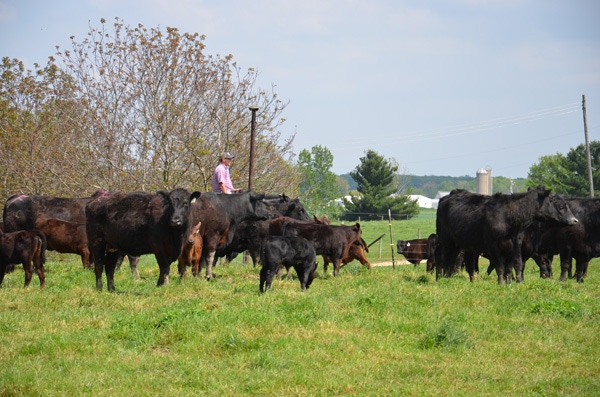The beef industry has more technology available to it than most other species. Yet cattlemen utilize technology less than their competitors, one geneticist says.

“We have more technology available to us in beef cattle than other species do and we probably utilize it worst,” says Matt Spangler, University of Nebraska-Lincoln geneticist. “So in an era of genomics, where we’re rushing forward, we shouldn’t waste time and resources and leave money on the table by not utilizing what we already know works – like EPDs, economic indices and crossbreeding. Let’s spend our time focusing on how we utilize technology.”
That’s not to say that genomics won’t or can’t be a part of the technology adoption efforts by cattlemen. Far from it. But the ability of genomics to be part of the technology mix hinges on an understanding of how it fits into the larger picture, he says.
“A bang-up test that explains about 50% of genetic variation is by itself only equal to an EPD accuracy of about 0.29. So by itself, it’s not a silver bullet. That’s why we want to augment it with our traditional EPD information,” Spangler says.
Where the benefit of genomics lies, at present at least, is in getting more accurate EPDs on animals at a younger age, he says. “Before genomics, there wasn’t a nickel’s worth of difference in accuracy between yearling bulls” when considering pedigree-based EPDs.
But the potential genetic differences between those bulls is considerable, he says. “Think about a flush that produces 10 bulls, where the pedigree EPD is identical amongst the flush mates,” he says. He calculates there are roughly 1,152,921,504,606,850,000 different genetic combinations amongst those flush mates.
“That’s why we want some DNA information early in life so we get a better idea of what their true genetic potential is,” he says. “If we have a test that explains 10% of the genetic variation, that’s a correlation of about 0.3. Since the upward limits of DNA tests can explain about 40% of the genetic variation between animals, the ability of the technology to better identify the genetic potential of yearling bulls is helpful.
“The benefit is mitigation of risk for the commercial producer,” Spangler says. “For the seedstock producer, it’s an opportunity to make faster genetic change. You can use younger animals earlier in life because you have more confidence in them.”
For commercial bull buyers, however, the fundamentals are still in place. While a genomics test by itself can be helpful, it also adds to the overload of numbers that are ginned out and printed in a sale catalog.
“Use EPDs, because the genomics as it comes to us today is going to be included in that,” Spangler says. Angus has been using marker-enhanced EPDs for several years. Several other breeds are on the brink of introducing similar technology. “Now, though, you will have to pay attention to accuracy, because the accuracy among those yearling bulls could differ,” he cautions.
For the future, Spangler says multiple-trait selection will become more critical. However, economic indices will help alleviate some of the decision-making problems that arise.
And for genomics? As research more accurately defines the genetic sequence for cattle, the power of genomics may circle back to its initial use – identifying genetic defects.
“There are more (genetic defects) out there that haven’t manifested themselves yet,” Spangler says. These are likely genetic defects that result in embryonic death. The cow comes open at preg-checking time and nobody knows why. Identifying those defects, particularly on the sire side, will help seedstock breeders drill down even deeper into their ability to provide a more complete genetic package to their customers.
About the Author(s)
You May Also Like



